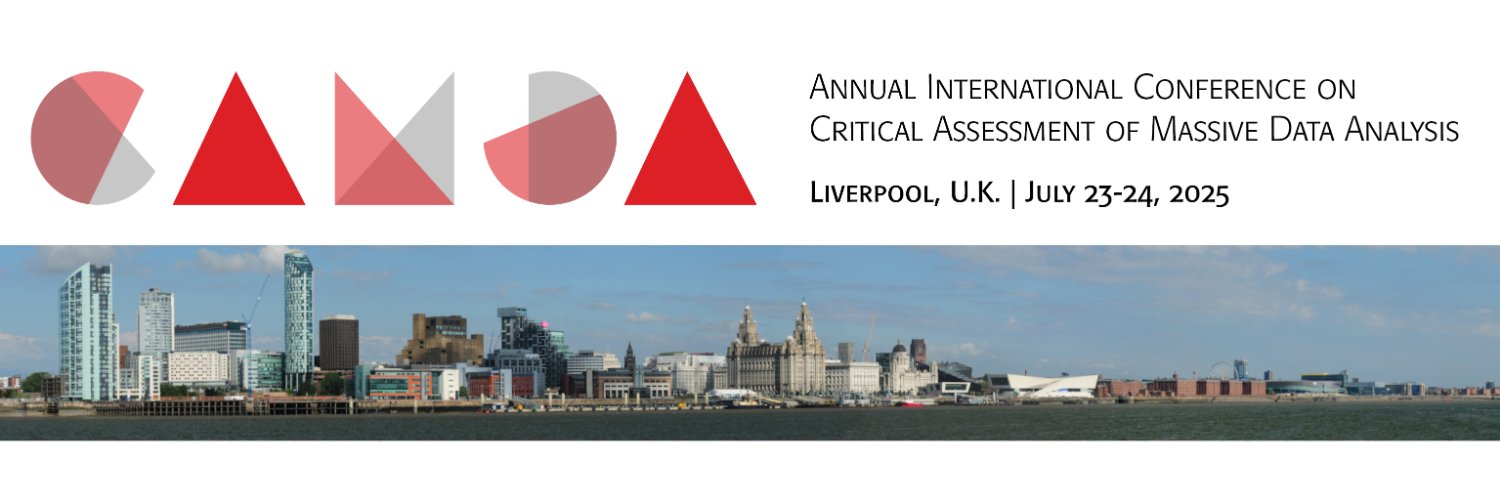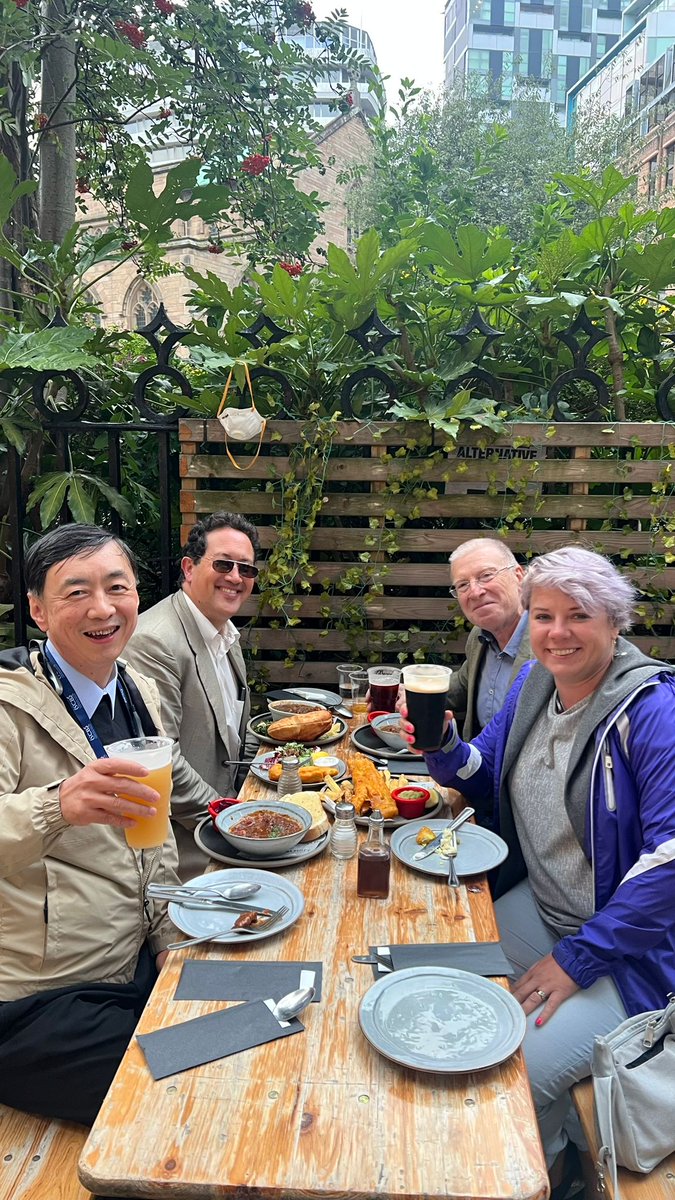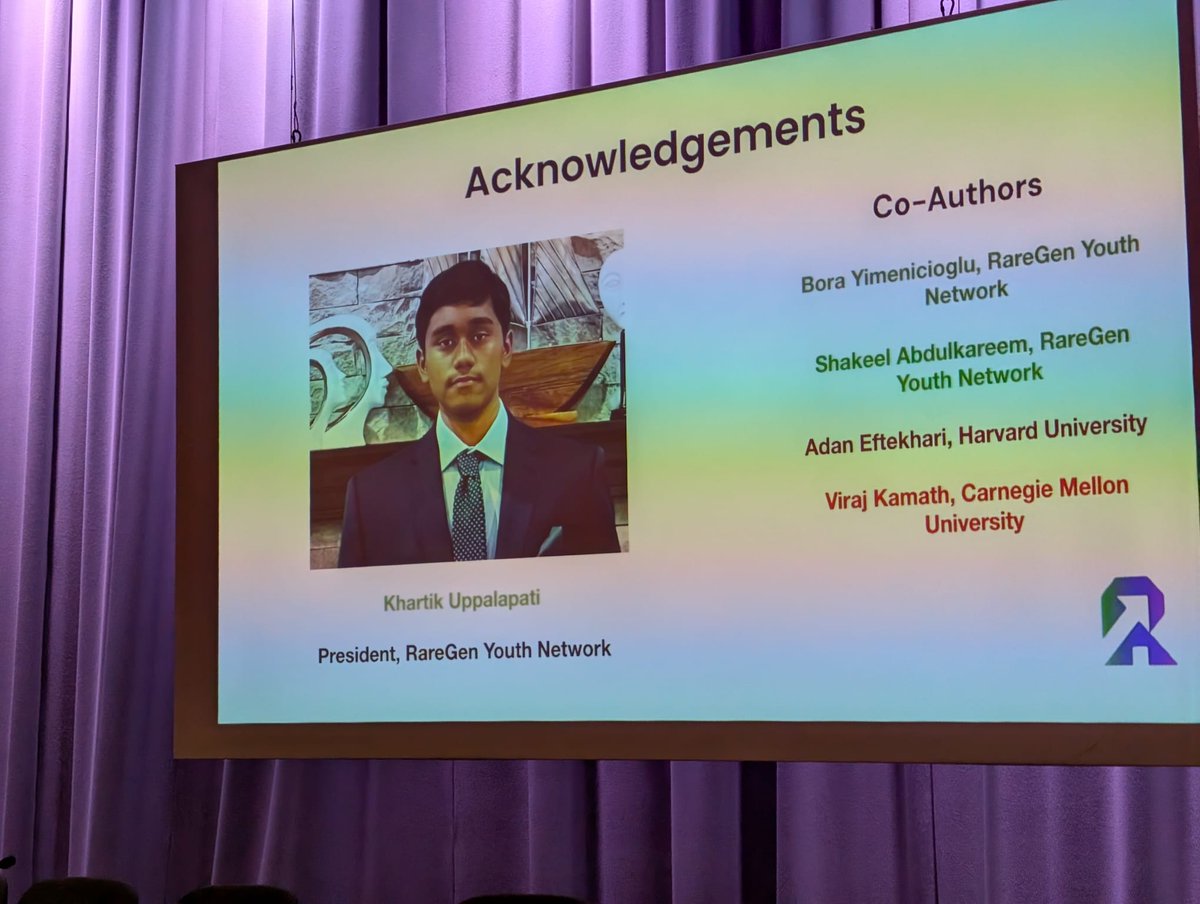
CAMDA 2025
@CAMDA_conf
International Conference on Critical Assessment of Massive Data Analysis
Daniel Voskergian (Al-Quds Univ.) presents a Grouping–Scoring–Modeling (GSM) framework at #CAMDA25, #ISBCECCB2025, to predict diabetic complications from synthetic EHRs. Using structured disease-stage groups & XGBoost, models accurately predict key outcomes like CKD & retinopathy
Spiros Denaxas (UCL) opens Day 2 of #CAMDA25, #ISBCECCB2025 with a keynote on the promise & pitfalls of Electronic Health Records in biomedical research. From multidimensional insights to best practices, EHRs are reshaping how we study thousands of conditions simultaneously

And the #CAMDA25 team continues with the celebration (including a visit to the super lambanana), wishing them all the best and looking forward to seeing you next year in the #ISMBECCB2025


Yuexi Gu (Xi’an Jiaotong Univ.) presents HI-MGSyn at #CAMDA25, a hypergraph & interaction-aware model for drug synergy prediction. By capturing multi-granular biological signals, it outperforms ML baselines and predicts novel combinations (5 literature validated) #ISMBECCB2025

Jules Kreuer (Univ. of Tübingen) presents NoisyDiffusion at #CAMDA25 a conditional diffusion model for synthetic gene expression data with built-in differential privacy. High accuracy & low MIA risk show promise for secure, high-utility genomic sharing #ISMBECCB2025

Steven Golob (Univ. of Washington Tacoma) tackles the data access bottleneck at #CAMD25 by evaluating synthetic data generation (SDG) algorithms for bulk RNA-seq, assessing to what extent they can generate privacy-safe genomics data without sacrificing quality #ISBCECCB2025

Andrew Wicks (DKFZ) explores NMF-based synthetic genomics at #CAMDA25 by integrating differential privacy with zero-inflated sampling, his method offers a practical, privacy-preserving alternative to data sharing, reducing exposure to membership inference risks in genomics.

The #CAMDA25 panel on Health Privacy brought together Spiros Denaxas, Antti Honkela, David Kreil, Wenzhong Xiao & Joaquin Dopazo to debate privacy-preserving ML, synthetic data, and regulatory challenges. A timely conversation on trust, utility & compliance in health AI

Hakime Öztürk (EMBL) introduces the #CAMDA25 Health Privacy Challenge (part of @ELSA_AI) in a Blue vs Red Team setup, participants develop & attack generative models (e.g., VAEs, GANs) for synthetic gene expression data—balancing utility & privacy in biology #ISBCECCB2025


Antti Honkela (Univ. of Helsinki) kicks off the #CAMDA25 Health Privacy Challenge with a call for responsible, privacy-preserving ML on sensitive health data. He explores how to fairly evaluate privacy–utility trade-offs in trained ML models #ISCBECCB2025

Now at #CAMDA25 #ISMBECCB2025, Doroteya Staykova (Multicore Dynamics) applies Topological Data Analysis to map healthy gut microbiomes. Her methodology reveals two distinct subgroups with unique taxonomic & functional signatures, offering a new perspective on microbiome health.

Vincent Mel (Univ. of Florida) proposes at #CAMDA25 #ISMBECCB2025 a new ensemble-based gut health index by integrating taxonomic & metabolic pathway data. The model outperforms GMHI, hiPCA & Shannon entropy, achieving 72% balanced accuracy and highlighting key microbiome features

Now at #CAMDA25, #ISMBECCB2025, Khartik Uppalapati (RareGen Youth Network) introduces RDMHI, a rare-disease–specific microbiome health index for PKU, integrating taxonomic, functional & genetic data. RDMHI outperforms GMHI & clinical baselines in forecasting Phe crises.

Rafael Pérez Estrada (UNAM) presents an ensemble approach to microbiome health at #CAMDA25, #ISMBECCB2025: By integrating taxonomic (MetaPhlAn) & functional (HUMAnN) data, his Optimized Pathway Ensemble achieves F1 = 0.76. A new web tool compares refined indices across diseases
